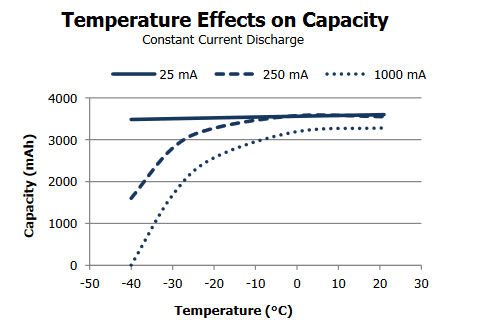I've been checking the forum and Google but still haven't got precise solution to my current question. In short, we are looking for rechargable batteries for Arduino that survive under -40 Celcius degrees.
Our group is going to deploy several sensors in the Polar Region, Arctic, to study the permafrost.
These sensors are dispersed in the area around a community, within some kilometers. The data collected by the sensors are to be saved with Arduino-based nodes, and then uploaded to cloud for quasi real time.
Hence, the Arduino modules serve as dataloggers and LoRa nodes. In the community, we've got power line to power up the LoRa bridge. But all the end nodes out of community cannot access AC power source.
Lacking a source of power, the end nodes rely on batteries and solar panels.
There are several considerations here.
For example, sensing and LoRa transmission need to be set to very low frequency, like, once per 15 minutes, to reduce the power consumption. We would set it via programming, and set Arduino to sleeping mode for the rest of the time.
Here comes the question I'm having trouble with:
What kind of battery and solar panel should we use? The temperature on site is very low, going to -40 celsius degrees in deep winter.
Most commonly used battery types cannot survive these temperatures. We also need the battery to be rechargable, which could be charged with solar panel (of course, mostly during Spring to Fall while there is sunshine.)
Our technician used lead acid batteries in the past but the performance was marginal.
The batteries on some sites were severely damaged and even broken during winter. And solar panel and power source regulator? We plan to shorten the operating time so we can reduce the size and cost of solar cells, but still, we need them to stay alive.
Any suggestions?

